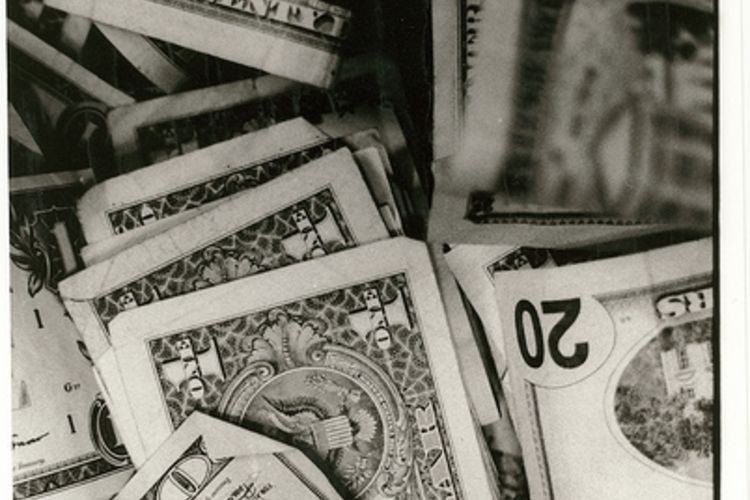How to diversify your investments CBS News
Post on: 1 Апрель, 2015 No Comment

(MoneyWatch) This post is based on chapter 6 of Larry Swedroe’s new book Think, Act, and Invest Like Warren Buffett . The data for today’s post and the associated text have been updated through the end of 2012.
Because most investors have not studied financial economics and don’t read financial economic journals or books on modern portfolio theory, they don’t have an understanding of how many stocks are needed to build a truly diversified portfolio. To effectively diversify the risks of just the asset class of U.S. large-cap stocks, you would have to hold a minimum of 50 stocks. For U.S. small-cap stocks, the figure is much higher. Once you expand your investment universe to include international stocks, it becomes obvious that the only way to effectively diversify a portfolio is through the use of mutual funds.
However, even when individuals invest in mutual funds, they typically don’t diversify effectively because they make the mistake of thinking that diversification is about the number of funds you own. Instead, it’s about how well your investments are spread across different asset classes. For example, an investor who owns 10 different actively managed U.S. large-cap funds may believe that he is effectively diversified. While it’s true that each fund will likely have some differentiation in its holdings from the others, collectively, all the investor has done has been to create an expensive closet index fund. The reason is that it’s likely that the return of his portfolio, before expenses, will approximate the return of an S&P 500 Index fund. After expenses, the odds are great it will underperform.
Even many individuals who invest in index funds get it wrong because they limit themselves to funds that mimic either the S&P 500 Index or a total U.S. market index. At the very least, they should also include a significant allocation (30 percent to 50 percent) to a fund such as Vanguard’s Total International Stock Index Fund.
The next step is to show you how simple it is to build a more effective, globally diversified portfolio. Many investors think that diversification means owning enough mutual funds. However, the key is spreading them across asset classes. After all, 10 different large-cap growth funds still means you only have exposure to one asset class.
The Basic Portfolio
We will begin with a portfolio that has a conventional asset allocation of 60 percent stocks and 40 percent bonds. The time frame will be the 38-year period, 1975-2012. This period was chosen because it’s the longest for which we have data on the indexes we need. While maintaining the same 60 percent stock/40 percent bond allocation, we’ll then expand our investment universe to include other stock asset classes.
We begin with a portfolio that consists of just two investments:
- The S&P 500 Index for the stock allocation
- Five-year Treasury notes for the bond portion
We’ll see how the portfolio performed if one had the patience to stay with this allocation from 1975 through 2011 and rebalanced annually. We will then demonstrate how the portfolio’s performance could have been made more efficient by increasing its diversification across asset classes. We do so in four simple steps.
Portfolio 1
- 60 percent S&P 500 Index
- 40 percent five-year Treasury notes
By changing the composition of the control portfolio, we will see how we can improve the efficiency of our portfolio. To avoid being accused of data mining, we will alter our allocations by arbitrarily cutting things in half.

Small-Cap Stocks
The first step is to diversify our stock holdings to include an allocation to U.S. small-cap stocks. Therefore, we reduce our allocation to the S&P 500 Index from 60 percent to 30 percent and allocate 30 percent to the Fama/French Small Cap Index. (The Fama-French indexes measure returns using the academic definitions of asset classes. Note that utilities have been excluded from the data.)
Portfolio 2
- 30 percent S&P 500 Index
- 30 percent Fama/French Small Cap Index
- 40 percent five-year Treasury notes
Value Stocks
Our next step is to diversify our domestic stock holdings to include value stocks. We shift half of our 30 percent allocation in the S&P 500 Index to a large-cap value index and half of our 30 percent allocation of small-cap stocks to a small-cap value index.
Portfolio 3
- 15 percent S&P 500 Index
- 15 percent Fama/French US Large Value Index (ex utilities)
- 15 percent Fama/French US Small Cap Index
- 15 percent Fama/French US Small Value Index (ex utilities)
- 40 percent five-year Treasury notes
International Stocks
Our next step is to shift half of our stock allocation to international stocks. For exposure to international value and international small-cap stocks we will add a 15 percent allocation to both the MSCI EAFE Value Index and the Dimensional International Small Cap Index.
Portfolio 4
- 7.5 percent S&P 500 Index
- 7.5 percent Fama/French US Large Value Index (ex utilities)
- 7.5 percent Fama/French US Small Cap Index
- 7.5 percent Fama/French US Small Value Index (ex utilities)
- 15 percent MSCI EAFE Value Index
- 15 percent Dimensional International Small Cap Index
- 40 percent five-year Treasury notes
The effect of the changes has been to increase the return on the portfolio from 10.5 percent to 12.3 percent — an increase of 17 percent in relative terms. This outcome is what we should have expected to see as we added riskier small-cap and value stocks to our portfolio. Thus, we also need to consider how the risk of the portfolio was impacted by the changes. The standard deviation (a measure of volatility, or risk) of the portfolio increased from 10.6 percent to 11.6 percent — an increase of 9 percent in relative terms. While returns increased 17 percent, volatility increased just 9 percent.














